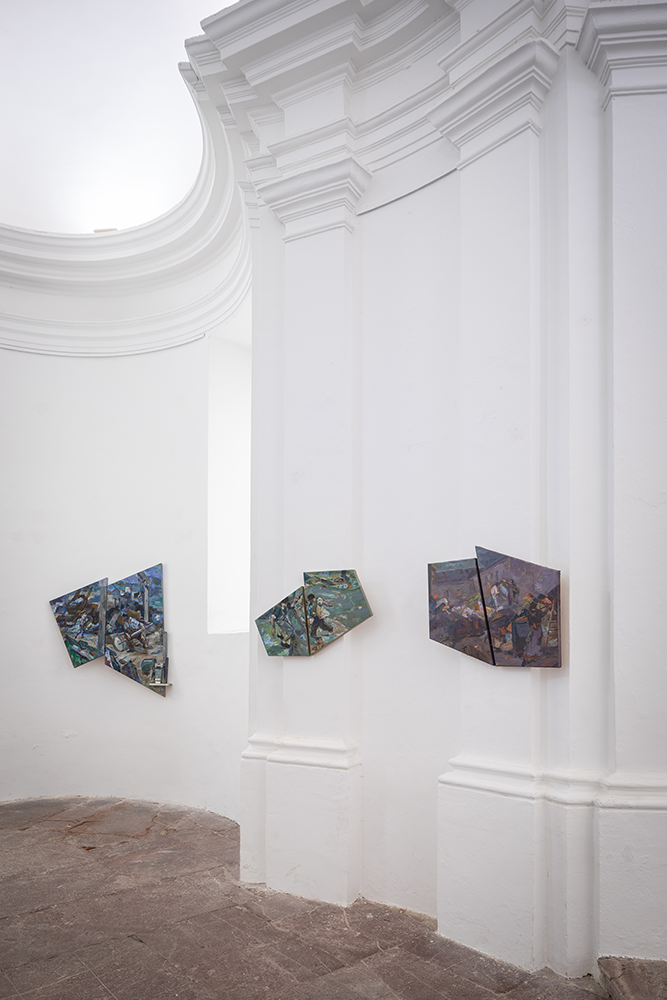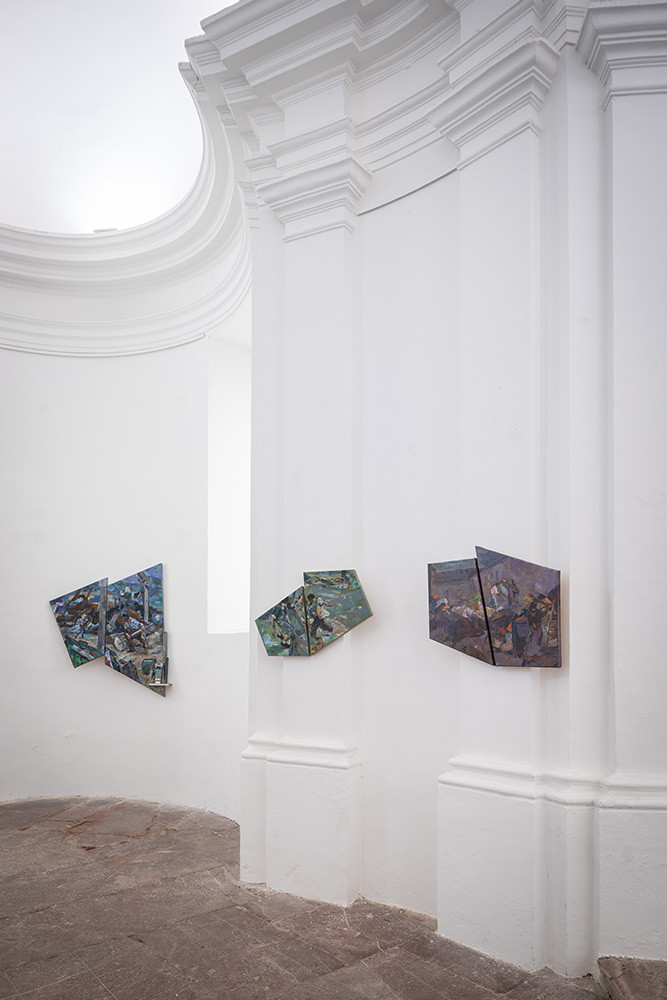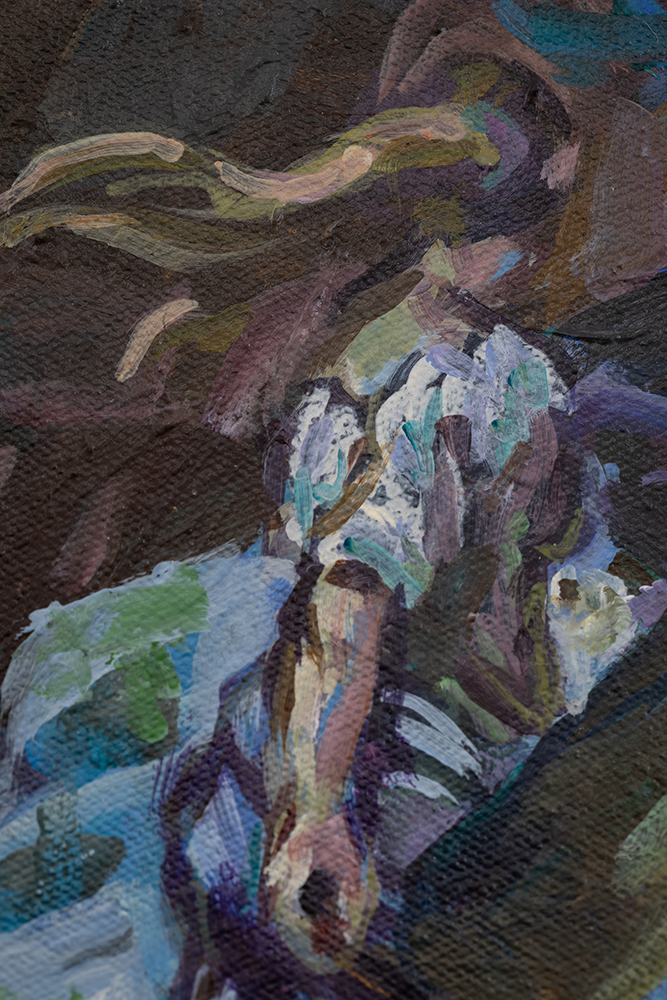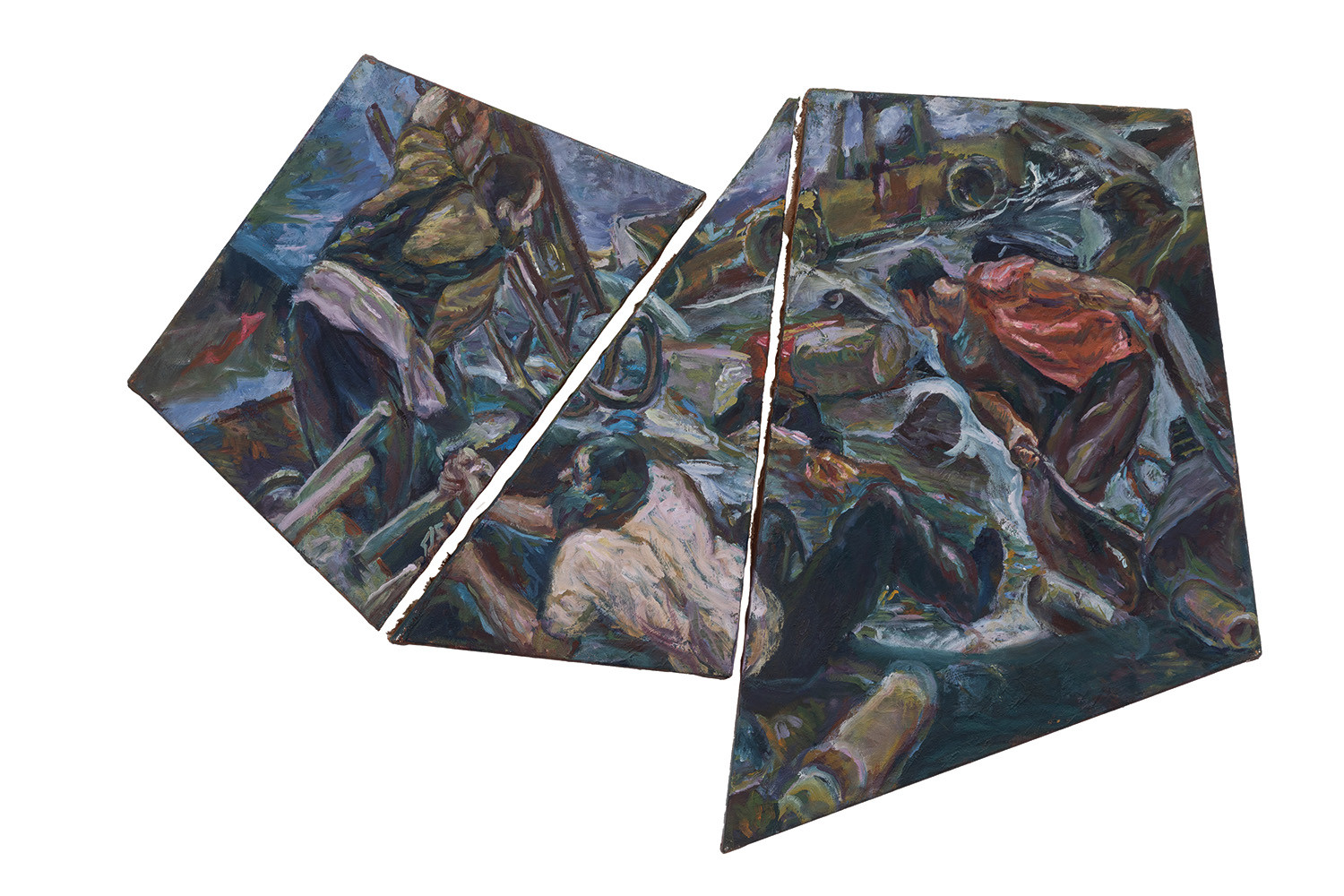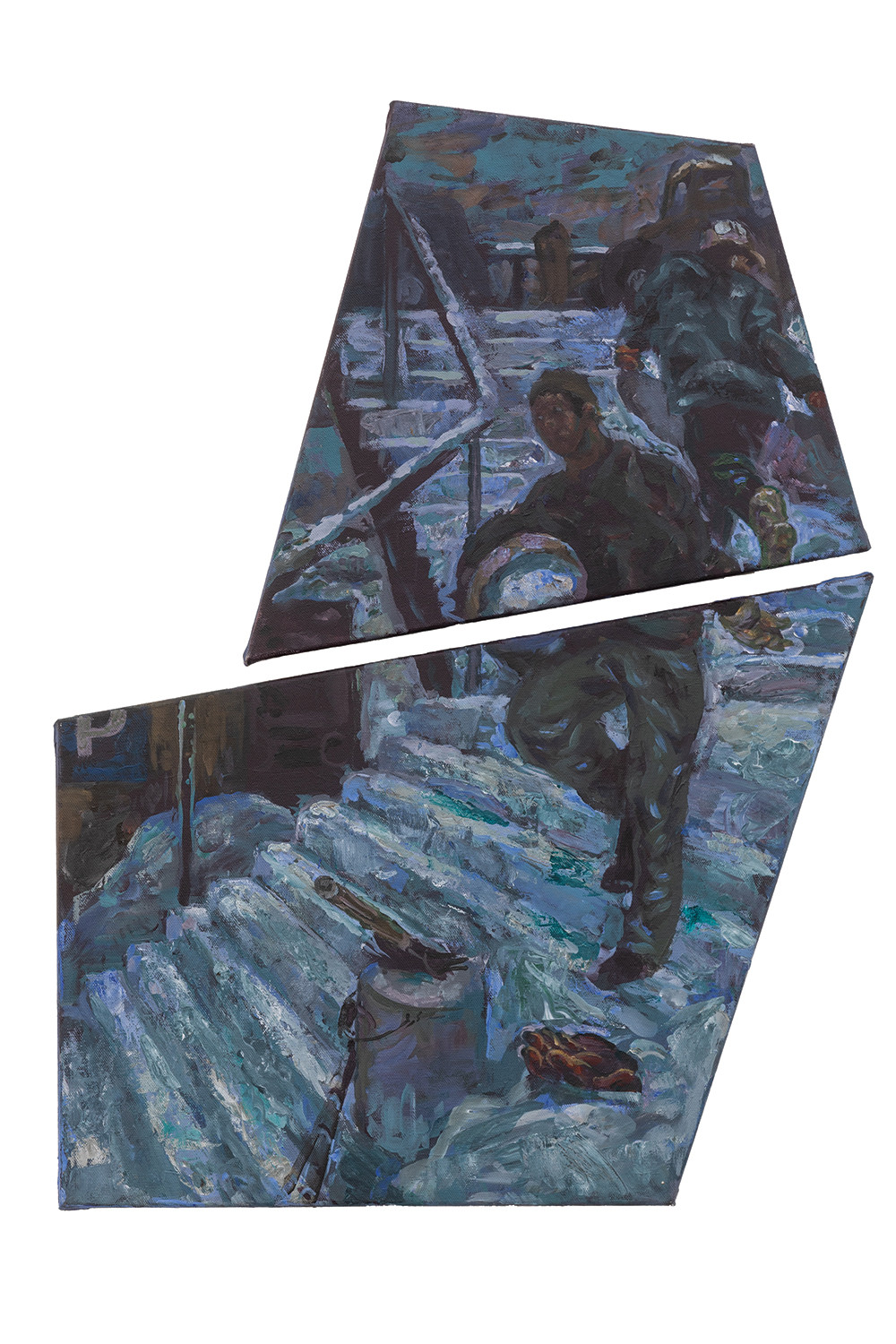Painter Marko Zorović (born 1973) has been successfully active in the field of Slovenian art production for some time. He completed his BA in Painting in 1997 in the class of Prof. Gustav Gnamuš and obtained his MA in 2000 under the supervision of Prof. Bojan Gorenc at the Academy of Fine Arts in Ljubljana.
After studying Painting, he worked for several years as a freelance cultural worker, wrote reviews and published articles in specialised journals. He organised and led a large number of art workshops and courses, and was a mentor to many young people preparing for their entrance exams. He was also involved in the restoration of paintings, book illustration and the drawing and reconstruction of archaeological finds.
In 2014, he presented his works in a group exhibition at the Equrna Gallery, followed by further group and solo exhibitions. In 2021, he received the Working Scholarship from the Ministry of Culture.
The artworks of his most recent creative period are characterised by the non-classical form of the painting support. This has evolved from a rectangular canvas to a multi-part canvas consisting of triangles, trapezoids and other polygons interrupted by a break, a dividing line. The shape of the painting support, its interruptions and the relationships between the parts and the whole, create a dynamic. The entire composition can only communicate successfully if each part is sufficiently expressive and complete on its own. When painting, Marko Zorović draws on his extensive knowledge of art history and depiction theory. References can be found in the multi-figurative painting of the Renaissance and Tintoretto's Mannerist formation of the figure. These also manifest themselves in Zorović's sudden turns, folds and foreshortenings, which, in dialogue with perspective aids, create spatial illusions of scenes that are otherwise mostly outside. The palette is dominated by the cool shades of the colour scale in a harmonisation of violet, blue, green and grey tones. Occasionally he also uses red and somewhat earthier tones.
For some years now, his works have been dominated by the iconographic motif of bin men, public utility workers, who carry out a difficult job that is ignored by the rest of the population, to which no great importance is attached, or which is only remembered in the event of a mishap when the rubbish begins to pile up to the point of suffocation. He depicts workers at rubbish dumps sifting, sorting through rubbish and clearing snow-covered streets. The people in work clothes are painted in their eagerness to work, they never look at the viewer, they work stoically and do not allow themselves to be distracted. They are doing a job that is generally taken for granted and invisible to most, and this also seems to be the perception of their own role. It is the painter who has recorded their work, depicted their expressive figures and elevated them to hero status.
Are Zorović's heroes really heroes in the truest sense of the word? Those who do their work wholeheartedly, see it as their mission and are willing to sacrifice themselves for it? Each of the rubbish collectors probably took on this role because he had no other choice in order to survive. So he is the hero of his own story.
Depictions of heroes are important motifs in the history of art and appear in stylistic periods in which Greek and Roman mythology was highly valued, as well as in Christian iconography. Heroism is also a frequent motif in times of new social orders, after the First and especially after the Second World War, when new ideologies and social values came to the fore. Socialist Realist painting is characterised by themes of building a new state that promotes the shared values of brotherhood and unity. This gave rise to the figures of shock workers in the visual arts, who build up society with their sweat and blood, and set the example for collective behaviour. They are the new heroes of society. In the 1960s and 1970s, public sculptures of monumental proportions were created throughout what was then Yugoslavia, introducing the modernist form of abstract reinforced concrete structures. Public commissions abounded and art was used to educate and create social value. The works of Marko Zorović nudge at this and even convey in their title that they embody the tendency to become monumental, awaiting a large public procurement to realise them on an even larger scale.
But neither can we ignore the environmental considerations raised by the artist's works. Today's society is strongly market-orientated. People have to buy and own as many material things as possible, which they "absolutely" need on the way to absolute happiness. By owning more and more new and newest things, by promoting consumption and by accumulating discarded items, pollution is also increasing, and it seems that we as a society are soothing our conscience by sorting waste instead of opting for sustainable conscious consumption and stopping overproduction. No need to worry that the heroes of the dump will run out of material, the only question is whether we might run out of heroes.

